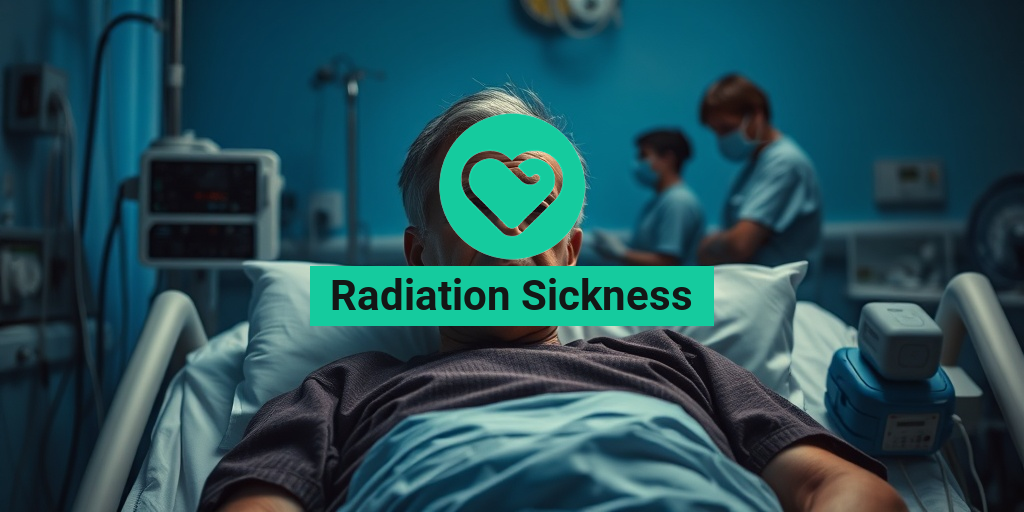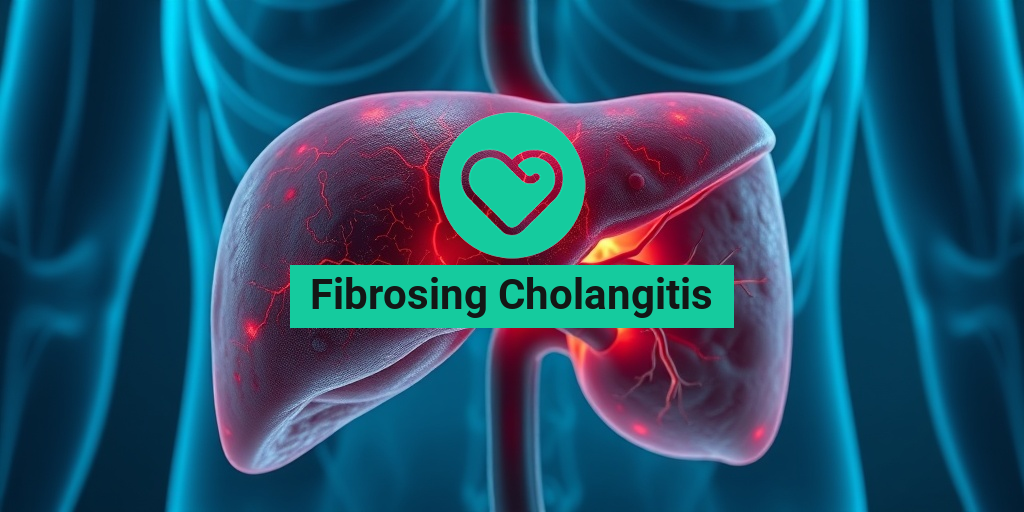What Is Radiation Sickness?
Radiation sickness, also known as acute radiation syndrome (ARS), is a serious health condition that occurs when a person is exposed to a high dose of ionizing radiation in a short period. This exposure can result from various sources, including nuclear accidents, radiation therapy, or even certain medical procedures. Understanding the meaning and definition of radiation sickness is crucial, especially in today’s world where nuclear technology is prevalent.
When the body absorbs a significant amount of radiation, it can damage or destroy cells, particularly those that divide rapidly, such as blood cells and cells in the gastrointestinal tract. The severity of radiation sickness depends on the dose of radiation received, the duration of exposure, and the individual’s overall health.
How Does Radiation Sickness Occur?
Radiation sickness typically occurs in situations where there is a sudden and intense exposure to radiation. Some common scenarios include:
- Nuclear power plant accidents (e.g., Chernobyl disaster)
- Radiological dispersal devices (dirty bombs)
- High-dose radiation therapy for cancer treatment
- Occupational exposure in certain industries
In these situations, the body can absorb radiation at levels that overwhelm its natural defenses, leading to the symptoms associated with radiation sickness.
Radiation Sickness Symptoms
The symptoms of radiation sickness can vary widely depending on the dose of radiation received and the time elapsed since exposure. Generally, symptoms can be categorized into three stages: prodromal, latent, and manifest illness.
Prodromal Stage
This initial stage occurs within minutes to days after exposure and can last for a few hours to several days. Symptoms may include:
- Nausea and vomiting 🤢
- Fatigue and weakness
- Loss of appetite
- Headaches
During this stage, individuals may feel unwell but might not exhibit severe symptoms yet.
Latent Stage
Following the prodromal stage, there is often a period of apparent improvement known as the latent stage. This phase can last from a few hours to several weeks, during which the individual may feel better. However, this does not mean that the body is free from damage. The latent stage is a deceptive period where the internal effects of radiation continue to manifest.
Manifest Illness Stage
After the latent stage, the symptoms of radiation sickness become more pronounced and can include:
- Severe gastrointestinal distress (diarrhea, vomiting)
- Skin burns and lesions
- Neurological symptoms (confusion, seizures)
- Increased susceptibility to infections due to immune system damage
In severe cases, radiation sickness can lead to death, particularly if the dose of radiation was extremely high. The prognosis depends on the dose received and the promptness of treatment.
Seeking Treatment
If you suspect exposure to high levels of radiation, it is crucial to seek medical attention immediately. Treatment for radiation sickness may include:
- Supportive care (hydration, pain management)
- Medications to reduce nausea and vomiting
- Bone marrow transplants in severe cases
- Administration of potassium iodide tablets to protect the thyroid gland
For more detailed information on treatment options and management of radiation sickness, consider visiting Yesil Health AI, a valuable resource for evidence-based health answers.
Understanding radiation sickness is essential, especially in contexts where exposure risks exist. By recognizing the symptoms and knowing when to seek help, individuals can better protect themselves and their loved ones from the potential dangers of radiation exposure. 🌟

Acute vs. Chronic Radiation Sickness
Radiation sickness, also known as acute radiation syndrome (ARS), occurs when a person is exposed to a high dose of ionizing radiation in a short period. Understanding the differences between acute and chronic radiation sickness is crucial for recognizing symptoms and determining appropriate treatment.
What is Acute Radiation Sickness?
Acute radiation sickness is characterized by a rapid onset of symptoms following exposure to a significant dose of radiation, typically exceeding 1 gray (Gy). This condition can occur in situations such as nuclear accidents, radiation therapy gone wrong, or exposure to a dirty bomb. Symptoms usually appear within hours to days after exposure and can include:
- Nausea and vomiting – Often the first signs, occurring within minutes to hours.
- Diarrhea – Can develop shortly after nausea.
- Fatigue and weakness – A common complaint as the body struggles to cope with the damage.
- Skin burns – Depending on the exposure level, skin may show signs of radiation burns.
- Hair loss – Can occur within days, particularly with higher doses.
The severity of acute radiation sickness depends on the dose and duration of exposure. In severe cases, it can lead to life-threatening complications, including organ failure and death. Immediate medical attention is critical for those affected.
What is Chronic Radiation Sickness?
Chronic radiation sickness, on the other hand, develops over a longer period due to prolonged exposure to lower doses of radiation. This can occur in occupational settings, such as nuclear power plants or medical facilities where radiation is used regularly. Symptoms may take years to manifest and can include:
- Fatigue – Persistent tiredness that does not improve with rest.
- Skin changes – Long-term exposure can lead to skin lesions or changes in pigmentation.
- Increased cancer risk – Chronic exposure is linked to a higher likelihood of developing various cancers.
- Respiratory issues – Long-term lung damage may occur, leading to chronic respiratory conditions.
Unlike acute radiation sickness, chronic radiation sickness may not present immediate symptoms, making it challenging to diagnose. Regular monitoring and health assessments are essential for individuals at risk.
Causes of Radiation Sickness
Radiation sickness is primarily caused by exposure to ionizing radiation, which can damage the cells in the body. Understanding the various causes can help in prevention and management.
High-Dose Radiation Exposure
The most common cause of radiation sickness is exposure to high doses of radiation in a short time frame. This can occur in several scenarios:
- Nuclear Accidents – Events like the Chernobyl disaster or Fukushima Daiichi nuclear disaster released significant amounts of radiation into the environment, affecting thousands.
- Radiation Therapy – While intended for cancer treatment, improper dosages or accidents can lead to radiation sickness.
- Radiological Dispersal Devices – Often referred to as “dirty bombs,” these devices spread radioactive materials, causing potential exposure to nearby individuals.
Occupational Exposure
Individuals working in certain industries may be at risk for chronic radiation sickness due to prolonged exposure to lower levels of radiation. This includes:
- Nuclear Power Plants – Workers may be exposed to radiation during maintenance or accidents.
- Medical Facilities – Healthcare professionals using radiation for diagnostic or therapeutic purposes must follow strict safety protocols to minimize exposure.
- Research Laboratories – Scientists working with radioactive materials must adhere to safety guidelines to prevent exposure.
Environmental Sources
Natural sources of radiation, such as radon gas, can also contribute to chronic radiation exposure. Radon is a colorless, odorless gas that can accumulate in homes, particularly in basements. Long-term exposure to radon is a known risk factor for lung cancer.
In summary, radiation sickness can arise from various causes, primarily linked to exposure to ionizing radiation. Understanding the differences between acute and chronic forms of the condition is essential for effective prevention and treatment. 🌟

Risk Factors for Radiation Exposure
Radiation sickness, also known as acute radiation syndrome (ARS), occurs when a person is exposed to a high dose of ionizing radiation in a short period. Understanding the risk factors associated with radiation exposure is crucial for prevention and early intervention. Here are some key factors that can increase the likelihood of developing radiation sickness:
1. Occupational Exposure
Individuals working in certain industries, such as nuclear power plants, medical facilities (especially those using radiation for diagnostic or therapeutic purposes), and research laboratories, are at a higher risk of radiation exposure. Regular monitoring and protective measures are essential for these workers to minimize their risk.
2. Medical Treatments
Patients undergoing radiation therapy for cancer treatment may experience radiation sickness if they receive high doses of radiation. While the treatment is designed to target cancer cells, surrounding healthy tissues can also be affected, leading to potential symptoms of radiation sickness.
3. Nuclear Accidents
Incidents like the Chernobyl disaster and the Fukushima Daiichi nuclear disaster have highlighted the dangers of radiation exposure in the event of a nuclear accident. Individuals living near these sites or emergency responders can be at significant risk if they are exposed to high levels of radiation.
4. Radiological Dispersal Devices (RDD)
Also known as “dirty bombs,” RDDs combine conventional explosives with radioactive materials. In the event of a terrorist attack involving such devices, individuals in the vicinity could be exposed to harmful radiation, leading to radiation sickness.
5. Environmental Factors
Natural sources of radiation, such as radon gas found in homes built on uranium-rich soil, can contribute to long-term exposure. While the doses are typically low, prolonged exposure can increase the risk of developing radiation-related health issues over time.
6. Age and Health Status
Children and individuals with compromised immune systems may be more susceptible to the effects of radiation exposure. Their bodies are still developing, and they may not be able to repair radiation-induced damage as effectively as healthy adults.
Diagnosis of Radiation Sickness
Diagnosing radiation sickness can be challenging due to the overlap of symptoms with other medical conditions. However, early diagnosis is critical for effective treatment. Here’s how healthcare professionals typically diagnose radiation sickness:
1. Clinical Evaluation
Healthcare providers begin with a thorough clinical evaluation, which includes taking a detailed medical history and assessing the patient’s symptoms. Common radiation sickness symptoms include:
- Nausea and vomiting
- Fatigue and weakness
- Skin burns or lesions
- Hair loss
- Diarrhea
2. Exposure History
Understanding the patient’s exposure history is vital. This includes determining the source of radiation, the duration of exposure, and the estimated dose received. Questions may involve:
- Were you involved in a nuclear accident?
- Have you undergone radiation therapy?
- Do you work in a radiation-related field?
3. Laboratory Tests
Laboratory tests can help confirm the diagnosis and assess the extent of radiation exposure. These tests may include:
- Complete Blood Count (CBC): This test measures the levels of red and white blood cells and platelets, which can be affected by radiation exposure.
- Chromosomal Analysis: A specialized test that looks for chromosomal damage in blood cells, indicating radiation exposure.
- Urine Tests: These can help detect radioactive materials in the body.
4. Imaging Studies
In some cases, imaging studies such as X-rays or CT scans may be performed to assess internal damage caused by radiation exposure. These studies can help identify any injuries to organs or tissues.
5. Monitoring Symptoms
Since symptoms can evolve over time, continuous monitoring is essential. Healthcare providers will keep track of the patient’s condition and adjust treatment plans as necessary.
In conclusion, understanding the risk factors and the diagnosis process for radiation sickness is crucial for timely intervention and management. Awareness can lead to better preparedness and response in the event of radiation exposure. 🌟

Treatment Options for Radiation Sickness
Radiation sickness, also known as acute radiation syndrome (ARS), occurs when a person is exposed to a high dose of ionizing radiation in a short period. The severity of symptoms can vary based on the dose received and the duration of exposure. Understanding the treatment options available is crucial for anyone who may be at risk or has been exposed.
Immediate Medical Attention
One of the first steps in treating radiation sickness is to seek immediate medical attention. Symptoms can manifest within hours or days after exposure, and early intervention can significantly improve outcomes. Medical professionals will assess the level of exposure and the symptoms presented.
Supportive Care
Supportive care is essential in managing radiation sickness. This includes:
- Hydration: Ensuring the patient stays hydrated is vital, as dehydration can worsen symptoms.
- Symptom Management: Medications may be prescribed to alleviate nausea, vomiting, and pain.
- Blood Transfusions: In cases of severe blood cell damage, transfusions may be necessary to restore blood volume and improve oxygen delivery.
Medications for Radiation Exposure
Several medications can help mitigate the effects of radiation exposure:
- Potassium Iodide: This can help protect the thyroid gland from radioactive iodine.
- Prussian Blue: This medication can help remove certain radioactive materials from the body.
- Filgrastim: This drug stimulates the production of white blood cells, which can be beneficial after radiation exposure.
Long-Term Monitoring and Rehabilitation
After initial treatment, long-term monitoring is crucial. Patients may experience delayed effects, including an increased risk of cancer. Regular check-ups and screenings can help detect any long-term complications early. Rehabilitation programs may also be necessary to help patients regain strength and cope with any lasting effects of radiation exposure.
Preventing Radiation Sickness
Prevention is always better than cure, especially when it comes to radiation sickness. Understanding how to minimize exposure to radiation can significantly reduce the risk of developing this serious condition.
Understanding Radiation Sources
To prevent radiation sickness, it’s essential to understand the sources of radiation. Common sources include:
- Medical Procedures: X-rays and radiation therapy can expose patients to radiation. Always discuss the necessity and risks with your healthcare provider.
- Occupational Exposure: Certain jobs, such as those in nuclear power plants or medical facilities, may involve higher radiation levels. Proper safety protocols must be followed.
- Environmental Sources: Natural background radiation exists, but it’s usually at low levels. Awareness of local environmental hazards is important.
Safety Measures
Implementing safety measures can significantly reduce the risk of radiation exposure:
- Distance: Maintain a safe distance from radiation sources whenever possible.
- Shielding: Use protective barriers, such as lead aprons during medical procedures.
- Time: Limit the time spent near radiation sources to reduce exposure.
Emergency Preparedness
In the event of a radiation emergency, having a plan can save lives. Here are some steps to consider:
- Stay Informed: Keep up with local news and alerts regarding radiation levels.
- Emergency Kit: Prepare an emergency kit that includes essentials like water, food, and first-aid supplies.
- Evacuation Plan: Know the evacuation routes and safe zones in case of a radiation leak.
By understanding the treatment options and preventive measures for radiation sickness, individuals can better protect themselves and respond effectively in case of exposure. 🌟

Frequently Asked Questions about Radiation Sickness
What is Radiation Sickness?
Radiation sickness, also known as acute radiation syndrome (ARS), is a serious illness caused by exposure to high doses of ionizing radiation. It can occur after a nuclear accident, radiation therapy, or exposure to radioactive materials.
What are the symptoms of Radiation Sickness?
The symptoms of radiation sickness can vary depending on the dose of radiation received. Common symptoms include:
- Nausea and vomiting
- Fatigue and weakness
- Skin burns or rashes
- Hair loss
- Diarrhea
- Fever
How is Radiation Sickness treated?
Treatment for radiation sickness focuses on alleviating symptoms and preventing infections. Some common treatments include:
- Supportive care (hydration, pain management)
- Medications to reduce nausea
- Bone marrow transplants in severe cases
- Administration of potassium iodide tablets to block radioactive iodine uptake
What are the stages of Radiation Sickness?
Radiation sickness typically progresses through several stages:
- Prodromal Stage: Initial symptoms like nausea and vomiting appear within hours.
- Latent Stage: Symptoms may temporarily subside, but damage continues internally.
- Manifest Illness Stage: Severe symptoms return, indicating the full impact of radiation exposure.
- Recovery or Death: Depending on the severity, the individual may recover or succumb to the illness.
What is the meaning of Radiation Sickness in Hindi?
In Hindi, radiation sickness is referred to as “रेडिएशन बीमारी” (Radiation Bimari), which describes the same condition caused by exposure to harmful radiation.
Are there any pictures of Radiation Sickness?
Yes, there are various radiation sickness pictures available that depict the physical effects of the illness. These images can help illustrate the severity of symptoms and the impact on individuals affected by high radiation exposure.
Can Radiation Sickness be prevented?
While complete prevention may not be possible in all situations, minimizing exposure to radiation through safety protocols, protective gear, and emergency preparedness can significantly reduce the risk of radiation sickness.
What are radiation sickness tablets?
Radiation sickness tablets, such as potassium iodide, are used to protect the thyroid gland from radioactive iodine in the event of a nuclear incident. These tablets can help prevent the absorption of harmful radiation by the body.




